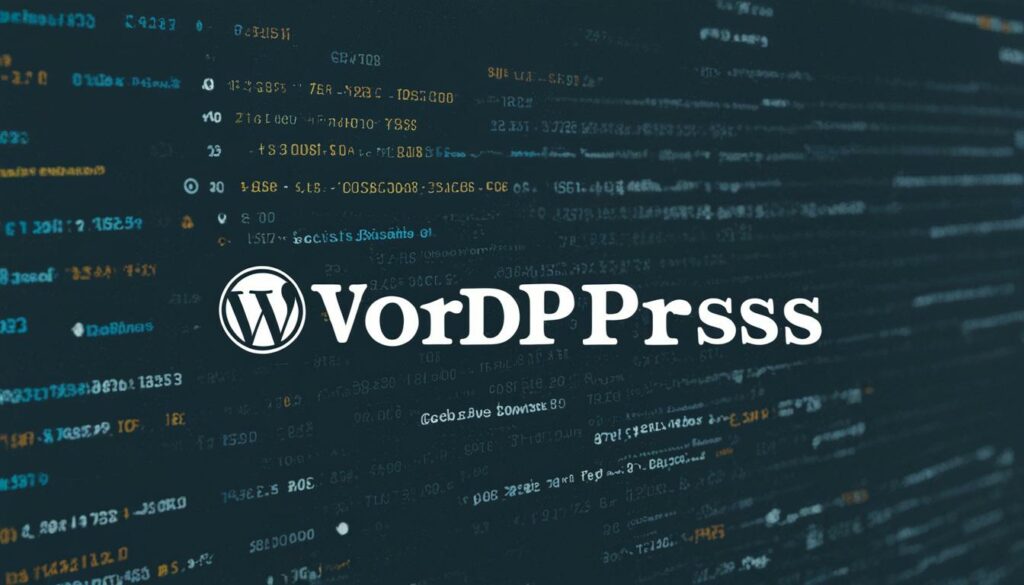More and more businesses are turning to IaaS hosting for its flexibility and cost-effectiveness. If you’re looking for an efficient way to manage your digital infrastructure, IaaS may be the solution you’ve been searching for. In this comprehensive guide, we’ll explore the ins and outs of IaaS hosting and how it can benefit your business.
But first, let’s start with the basics. What exactly is IaaS?
What is IaaS? Infrastructure as a Service
IaaS, short for Infrastructure as a Service, is a cloud computing model that provides virtualized computing resources over the internet. It allows businesses to access and utilize infrastructure components such as servers, storage, and networking, without the need for in-house hardware or infrastructure maintenance.
With IaaS, you can scale your resources based on your specific needs, paying only for what you use. This flexibility has made IaaS a popular choice among businesses of all sizes.
Key Takeaways:
- IaaS hosting offers flexibility and cost-effectiveness for businesses.
- It provides virtualized computing resources over the internet.
- Businesses can scale their resources based on demand.
- IaaS eliminates the need for in-house IT infrastructure.
- It allows businesses to pay only for the resources they use.
What is IaaS? Infrastructure as a Service
IaaS, short for Infrastructure as a Service, is a crucial component of cloud computing models. Alongside Software as a Service (SaaS), Platform as a Service (PaaS), and Data as a Service (DaaS), IaaS provides organizations with virtualized computing resources delivered over the internet.
During the past few years, IaaS solutions have grown in popularity due to their ability to bypass the costs associated with physical servers. By utilizing IaaS, businesses can access and pay for the computing services they need, scaling their resources as demand fluctuates. This flexibility has revolutionized the way businesses manage their online computing infrastructure.
“IaaS solutions give businesses the freedom to focus on their core competencies while leveraging the expertise and resources of service providers.”
With IaaS, organizations can eliminate the need for in-house IT infrastructure, reducing maintenance costs while still benefiting from cutting-edge technologies. By partnering with a reliable third-party provider, businesses gain access to virtual servers, cloud security, storage and backup capabilities, as well as advanced analysis tools.
Cloud Computing Models
Cloud computing models provide varying levels of service provision to their users. Here’s a brief overview of the different cloud computing models:
- IaaS: Provides virtualized computing resources, enabling organizations to bypass physical servers and scale resources according to demand.
- PaaS: Offers a cloud computing platform for application development, providing tools, middleware, operating systems, and databases.
- SaaS: Provides access to fully managed applications over the internet, eliminating the need for local installations.
- DaaS: Refers to cloud-based data management and delivery.
As you can see, each cloud computing model serves different purposes based on business requirements and goals. However, IaaS stands out as a cost-effective and flexible option for organizations seeking to optimize their online computing infrastructure.
| Advantages of IaaS | Disadvantages of IaaS |
|---|---|
| Scalability to meet fluctuating resource demands | Potential cybersecurity threats |
| Cost savings by eliminating the need for physical infrastructure | Challenges in outsourcing IT management |
| Flexibility in allocating resources | Unexpected costs associated with service usage |
| Rapid innovation and access to the latest technologies | Dependency on the performance of the service provider |
Table: Advantages and disadvantages of IaaS
How IaaS Works
In order to understand the workings of Infrastructure as a Service (IaaS), it’s important to grasp its fundamental mechanism. IaaS operates by leveraging a third-party cloud service provider to handle the hosting of a company’s IT infrastructure. This includes essential components such as servers, cloud storage, hardware, and virtualization.
The delivery of IaaS is automated, streamlining the process for businesses. Access to the infrastructure is granted through online platforms, enabling usage via computers, mobile devices, or virtual machines. This accessibility allows organizations to harness the power of IaaS for various purposes, such as:
- Developmental testing
- Website hosting
- Data storage and analysis
- Online applications
- High-performance computing
By employing a third-party cloud service provider, businesses can offload the responsibility of hosting their IT infrastructure. This not only minimizes the need for in-house maintenance but also alleviates the burden on organizations to invest in physical infrastructure.
The IaaS model provides businesses with the flexibility to scale their resources based on demand, optimizing operational efficiency. This scalability, coupled with the convenience of online accessibility, makes IaaS a valuable solution for organizations seeking cost-effective and efficient IT infrastructure hosting.
Types of Cloud Computing
When it comes to cloud computing, there are several types of cloud offerings to choose from. Each type serves a specific purpose and offers distinct benefits. Let’s take a closer look at the three main types: Infrastructure as a Service (IaaS), Platform as a Service (PaaS), and Software as a Service (SaaS).
IaaS: Infrastructure as a Service
IaaS platforms provide virtual servers and a range of infrastructure-related services, allowing businesses to offload the burden of maintaining physical servers and data centers. With IaaS, you can scale your resources on demand, ensuring that you have enough computing power and storage to meet your business needs. It offers flexibility, scalability, and cost-effectiveness, making it a popular choice for businesses of all sizes.
PaaS: Platform as a Service
PaaS is a cloud-computing platform that provides developers with a complete set of tools and services for building, testing, and deploying applications. It includes everything from operating systems, development frameworks, and databases, to middleware and other necessary components. With PaaS, developers can focus on writing code and building applications without having to worry about the underlying infrastructure. It offers convenience, speed, and efficiency, making it ideal for software development teams.
SaaS: Software as a Service
SaaS refers to fully managed software applications that are accessible over the internet. Instead of purchasing and installing software locally, users can access and use applications online, eliminating the need for maintenance and updates. SaaS offers convenience, scalability, and cost savings, as businesses only pay for the features and services they use. It is widely used for applications like customer relationship management (CRM), email, project management, and collaboration tools.
Data as a Service (DaaS) is another type of cloud offering that focuses on cloud-based data management and delivery. However, for the purpose of this article, we will mainly focus on the three main types mentioned above.
Each type of cloud computing has its own benefits and use cases. The following table provides a quick comparison of IaaS, PaaS, and SaaS to help you better understand their differences:
| IaaS | PaaS | SaaS |
|---|---|---|
| Virtual servers and infrastructure services | Development tools and platform | Managed software applications |
| Flexibility and scalability | Convenience and speed | Cost savings and accessibility |
| Pay for resources used | Focus on application development | No maintenance or updates required |
By understanding the differences between IaaS, PaaS, and SaaS, you can choose the right cloud computing model that aligns with your business goals and requirements. Whether you need scalable infrastructure, a development platform, or fully managed software applications, there is a cloud offering suited to your needs.

Pros and Cons of IaaS
When considering infrastructure as a service (IaaS), it’s important to weigh the advantages and disadvantages to make an informed decision for your business. Let’s take a closer look at the benefits and challenges of IaaS:
Advantages of IaaS
- Cost Savings: By adopting IaaS, your business can save on capital expenses by eliminating the need for expensive onsite infrastructure. You only pay for the resources you currently use, resulting in significant cost savings.
- Rapid Innovation: IaaS enables businesses to stay up to date with the latest computing infrastructure and technologies without the burden of managing in-house operations. This allows for rapid innovation and the ability to leverage cutting-edge solutions.
- Reduced In-house Operations: With IaaS, you can offload the responsibility of managing and maintaining physical infrastructure, allowing your team to focus on strategic initiatives and core business activities.
- Security and Stability: IaaS providers prioritize security and offer robust measures to protect your data and applications. They also ensure stability by offering scalable and reliable infrastructure that meets industry standards.
While the benefits of IaaS are significant, there are also some potential disadvantages that businesses should be aware of:
Disadvantages of IaaS
- Cyber Threats: As with any cloud-based service, there is always a risk of cyber threats. It’s crucial to implement strong security measures and collaborate with your IaaS provider to mitigate these risks.
- Outsourcing Challenges: Depending on a third-party provider for your infrastructure can present challenges in terms of communication, accountability, and integration with existing systems. It’s important to choose a reliable and trustworthy partner.
- Unexpected Costs: While IaaS can lead to cost savings, businesses need to carefully monitor their usage to avoid unexpected costs. It’s essential to plan and allocate resources effectively to prevent unforeseen expenses.
- Dependency on Service Provider’s Performance: Your business heavily relies on the performance and reliability of the IaaS provider. Downtime or service interruptions from the provider can impact your operations, so it’s important to choose a provider with a strong track record.
Overall, IaaS offers numerous advantages, including cost savings, rapid innovation, reduced in-house operations, and security and stability provided by the service provider. However, business owners should also be aware of potential challenges such as cyber threats, outsourcing issues, unexpected costs, and dependency on the provider’s performance.

Benefits of IaaS in Business
IaaS offers several benefits for your business. Take a look at the advantages below:
- Scalability: With IaaS, you have the flexibility to scale your resources up or down based on demand. This allows you to easily adapt to changing business needs, ensuring that you always have the right amount of computing power without overspending.
- Cost Savings: Moving to IaaS can save your business money by eliminating the need for physical infrastructure and reducing maintenance costs. You only pay for the resources you use, avoiding unnecessary expenses.
- Flexibility: By utilizing IaaS, you can outsource the management of your infrastructure to a third-party provider. This allows you to focus on your core business functions while leaving the infrastructure maintenance and management to the experts.
- Speed: IaaS offers fast deployment and updates, enabling your business to quickly adapt to market changes and stay ahead of the competition. This agility allows for rapid innovation and the ability to bring products and services to market faster.
- Backup Plan: With IaaS, you can ensure the safety and availability of your data through regular backups. This provides peace of mind knowing that your critical business information is protected and can easily be restored if needed.
Whether it’s for test and development, website hosting, storage and recovery, web apps, high-performance computing, or big data analysis, IaaS offers a wide range of applications that can benefit your business.
“With IaaS, you can scale your resources, save costs, gain flexibility, accelerate speed, and have a reliable backup plan for your business needs.”
Embrace the power of IaaS in your business and experience the scalability, cost savings, flexibility, speed, and backup capabilities it offers.

Conclusion
In today’s digital landscape, IaaS hosting has emerged as a game-changer for businesses seeking flexible and cost-effective solutions for managing their digital infrastructure. By eliminating the need for in-house IT infrastructure, IaaS allows businesses to pay for the resources they currently need, resulting in significant cost savings.
One of the key advantages of IaaS hosting is scalability. With the ability to scale resources up or down based on demand, businesses can efficiently manage their infrastructure without overprovisioning or being limited by capacity constraints. This scalability empowers organizations to focus on their core competencies and adapt quickly to changing market conditions.
Another major advantage of IaaS hosting is the flexibility it provides. By outsourcing infrastructure management to a reliable third-party service provider, businesses can redirect their resources to more strategic initiatives. This flexibility enables organizations to allocate resources more effectively and drive innovation from a technological standpoint.
Furthermore, IaaS hosting offers businesses speed and agility. With fast deployment and updates, organizations can rapidly implement new technologies and stay ahead of the curve. Additionally, high availability and easy access to IT infrastructure from any location further enhance business operations and productivity.
Overall, IaaS hosting plays a crucial role in modern cloud computing solutions. By leveraging the advantages of scalability, cost savings, flexibility, and speed, businesses can harness the power of cloud computing and drive innovation in today’s competitive business landscape.
FAQ
Q: What is IaaS hosting?
A: IaaS hosting, or Infrastructure as a Service hosting, is a type of cloud computing model that provides virtualized computing resources over the internet. It allows businesses to scale their resources based on demand and eliminates the need for in-house IT infrastructure.
Q: How does IaaS work?
A: IaaS works by mobilizing a third-party cloud service provider to host the IT infrastructure on behalf of businesses. This includes servers, cloud storage, hardware, and virtualization. Businesses can access the infrastructure online through computers, mobile devices, or virtual machines.
Q: What are the types of cloud computing offerings?
A: There are four types of cloud computing offerings: IaaS, PaaS, SaaS, and DaaS. IaaS provides virtual servers and offers cloud security, storage, backup, and analysis capabilities. PaaS is a cloud-computing platform for application development. SaaS provides access to fully managed applications over the internet. DaaS refers to cloud-based data management and delivery.
Q: What are the advantages of IaaS?
A: The advantages of IaaS include lower costs, rapid innovation, reduced in-house operations, and security and stability provided by the service provider. Businesses can save on capital expenses, scale resources as needed, and focus on their core business.
Q: What are the benefits of IaaS in business?
A: IaaS provides scalability, cost savings, flexibility, and speed for businesses. It allows organizations to scale their resources based on demand, eliminate the need for physical infrastructure, and outsource infrastructure management. IaaS applications can be applied to various business functions, including test and development, website hosting, storage and recovery, web apps, high-performance computing, and big data analysis.












